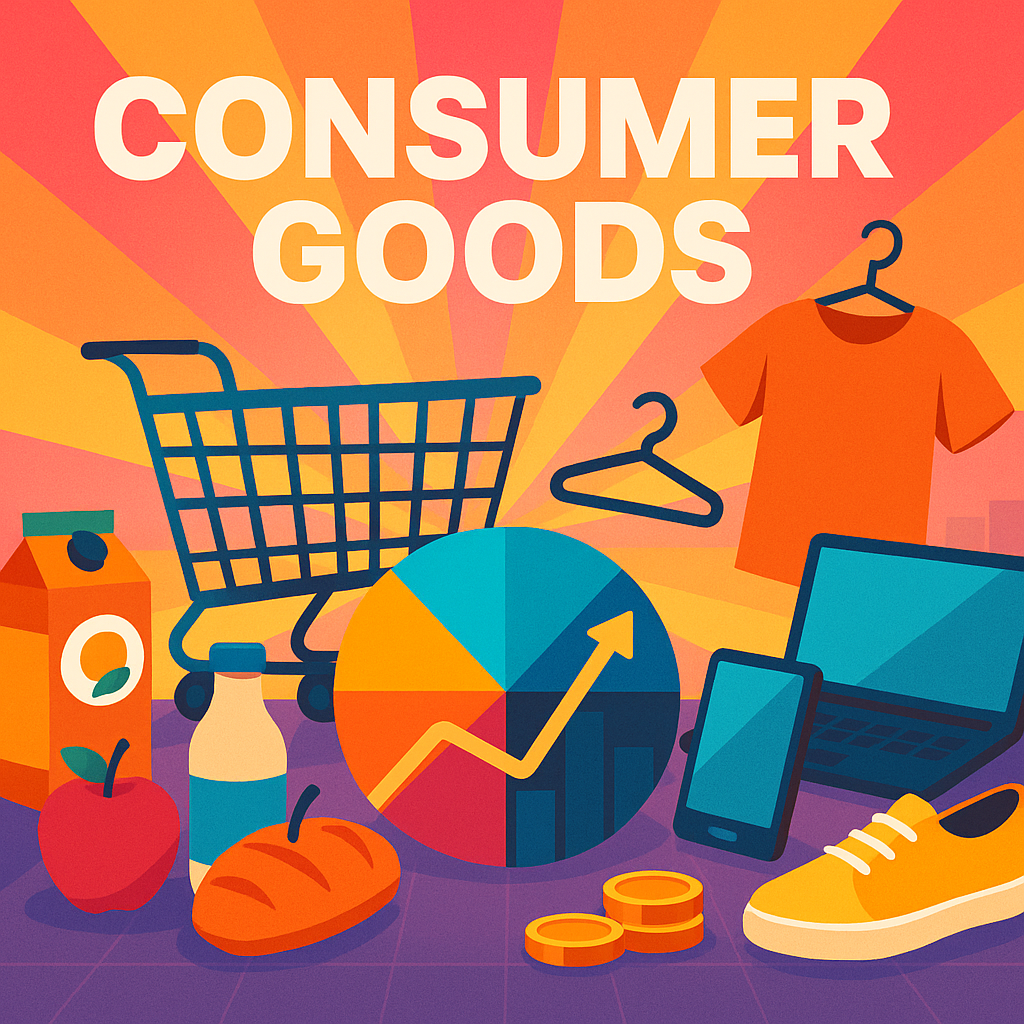Products purchased by end‑users for personal or household use—ranging from everyday groceries to durable appliances and discretionary luxuries—thereby forming a central pillar of global economic activity.

1. The Basic Categories
First and foremost, consumer goods split into three broad buckets:
| Category | Typical Items | Purchase Frequency |
|---|---|---|
| Fast‑Moving Consumer Goods (FMCG) | Food, beverages, toiletries | Daily to weekly |
| Durable Goods | Cars, electronics, furniture | Multi‑year |
| Discretionary Goods | Fashion, cosmetics, travel gear | Income‑dependent, non‑essential |
Consequently, each category responds differently to income swings, inflation and technological change.
2. Supply‑Chain Journey
Moreover, the path from factory to shopping cart usually involves:
- Manufacturing – Raw materials converted into finished products.
- Distribution – Wholesalers and logistics firms move goods to retailers.
- Retail & E‑Commerce – Stores or online platforms market and sell to consumers.
- After‑Sales Service – Warranties, repairs and customer support for durables.
Thus, efficient supply chains and brand strength often determine competitive advantage.
3. Demand Drivers
Because consumer spending accounts for roughly 60 % of global GDP, key drivers include:
- Disposable Income – Wage growth boosts discretionary purchases.
- Population Trends – Urbanization and demographic shifts re‑shape demand for packaged food or baby products.
- Technological Innovation – Smart‑home gadgets create new durable‑goods niches.
- Cultural & ESG Factors – Sustainability concerns foster demand for eco‑friendly packaging.
4. Business Metrics to Watch
| Metric | Why It Matters |
|---|---|
| Same‑Store Sales | Gauges organic retail growth for FMCG giants. |
| Inventory Turnover | Indicates supply‑chain efficiency. |
| Gross Margin | Reflects pricing power and input‑cost inflation. |
| Brand Equity Scores | Measure long‑term loyalty, crucial for discretionary goods. |
Investors monitor these indicators to assess sector health.
5. Current Market Pulse (2025)
- Global FMCG sales up 4.1 % YoY, helped by emerging‑market expansion.
- Durable‑goods orders softened 2.3 % amid higher financing costs, yet AI‑enabled electronics remain bright spots.
- Sustainability pushes drive 15 % growth in refillable household‑cleaner segments.
6. Risks and Headwinds
Nevertheless, consumer‑goods firms face:
- Inflation Pressures – Higher raw‑material costs squeeze margins unless brands pass through price hikes.
- Supply‑Chain Disruptions – Geopolitical tensions and extreme weather challenge logistics.
- Regulatory Shifts – Sugar taxes or plastic bans alter product formulas and packaging.
- Changing Consumer Preferences – Health‑conscious and digital‑native buyers upend legacy brands.
Key Takeaways
Consumer goods encompass FMCG, durable and discretionary items that satisfy day‑to‑day human needs and wants. Because spending patterns mirror income, demographics and cultural shifts, the sector serves as both a macro indicator and an investment opportunity. Understanding category dynamics, demand drivers and associated risks is essential for businesses, investors and policymakers alike.